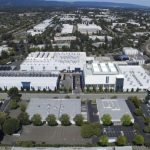Cloud Demand Drives Data Center Market to New Records

Even as public cloud use grows, many companies aren't ready to shut down their own systems
U.S. businesses last year paid for a record-high 396.4 megawatts of power in the country’s largest data-center markets, up 33% from 2018 amid soaring demand for cloud services, according to a report released Wednesday by real estate services firm CBRE Group Inc.
Amazon.com Inc., Microsoft Corp. and other large cloud services provided the bulk of that demand, but many companies reluctant to shift all of their data to external systems also ran their own data centers, either in-house or in warehouse-sized spaces leased by third-party data-center facilities that are known as colocation services.
“Insurance, financial services and health-care companies, among others, are the most likely to keep using their own purpose-built facilities,” said Pat Lynch, senior managing director of CBRE’s data center division.
Colocation services rent physical space for companies to store their servers and other data center hardware. The facilities typically house racks of servers and other hardware, which can be costly and inefficient for companies to manage themselves.
By contrast, cloud services operate their own data centers, renting computing capacity to businesses on a pay-as-you-go basis.
In North Virginia, the world’s largest data-center market, cloud services last year accounted for roughly 200 megawatts of total data-center demand, compared with nearly 50 megawatts by colocation services or in-house systems.
Other areas with large data-center markets include Silicon Valley, the Dallas-Fort Worth region, and New York, New Jersey and Connecticut.
Over the past five years, cloud services have supplied a growing share of data-center use, while the supply by colocation or in-house systems has remained roughly steady by comparison, according to the report.
Technology research firm International Data Corp. estimates the global number of data centers owned and operated by cloud service providers, colocation services or other technology firms rose to roughly 9,100 last year, up from 7,500 in 2018. International Data expects that number to top 10,000 this year.
There were also about 28,500 data centers last year owned by companies outside the technology sector used for running information-technology systems, down from 35,900 in 2018, IDC said.
Rather than shut down their data centers altogether, most companies have adopted a hybrid approach to cloud computing by using multiple cloud providers in addition to their own internal systems. That way they can avoid getting locked into any one outside vendor as prices and capabilities shift across the cloud-services market, IT research firm Gartner Inc. says.
Many companies also remain wary of turning over sensitive data to outside services, especially firms in highly regulated industries such as finance or health care, Gartner says.
As demand for hybrid capabilities grows, many of the market’s largest cloud-service providers have unveiled tools aimed at helping companies run systems in the cloud and in their own data centers.
In November, Microsoft introduced Azure Arc, a system that allows companies to run many of its cloud-based database applications in their own data centers, among other hybrid-friendly applications. Amazon’s cloud service announced AWS Outposts, a similar product, later in the year.
Both moves followed International Business Machines Corp. ’s $34 billion acquisition of Red Hat Inc., a developer of open-source software that enables chief information officers and other enterprise IT managers to run applications in competing cloud services, as well as on their own systems.
Red Hat Chief Executive Jim Whitehurst in August told CIO Journal that hybrid strategies can reduce IT costs while allowing a “greater pace of innovation to occur, because you’re not hamstrung by all these incompatible vertical stacks.”
By Angus Loten, February 27, Wall Street Journal



